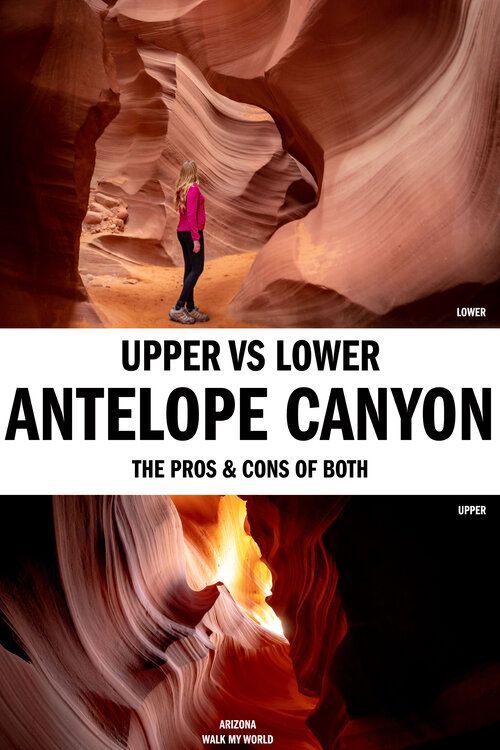Antelope Canyon, a gem nestled in the heart of Northern Arizona, has captivated travelers and photographers alike with its otherworldly beauty. Comprising two distinct segments—Upper Antelope Canyon and Lower Antelope Canyon—visitors are often torn between them. Each canyon showcases a unique charm, inviting exploration and admiration. In this comprehensive guide, we will delve into the nuances of both canyons, helping you prepare for a memorable visit.
Before embarking on your Antelope Canyon journey, it’s essential to familiarize yourself with the geographical makeup of the area. Located near the town of Page, Arizona, the Antelope Canyon is a slot canyon formed through the erosive forces of flash flooding and wind. The mesmerizing waves of sandstone, which shimmer in hues of orange, red, and gold, are sculpted beautifully by natural elements over millennia.
The primary access to both upper and lower canyons requires a guided tour, ensuring safety and providing insight into the geology and history of the area. It’s advisable to check for availability and book your tours in advance, especially during peak seasons, which typically range from spring to early fall.
Upper Antelope Canyon: The Captivating Light Play
Upper Antelope Canyon, often referred to as “The Crack,” is renowned for its dramatic light beams, especially during the midday hours. As sunlight pours directly down into the canyon, it creates ethereal beams that dance among the walls, illuminating the intricate textures of the sandstone. This phenomenon makes Upper Antelope a paradise for photographers looking to capture that Instagram-worthy shot.
Access to Upper Antelope Canyon is relatively easy, with a well-maintained walking path that caters to visitors of various physical abilities. The narrow corridors often lead to expansive sections, allowing for breathtaking views that change dynamically as you wander through the canyon. The winding paths invite exploration, prompting a sense of wonder as you are enveloped by towering walls adorned with nature’s artistry.
Despite its popularity, visitors are often struck by the tranquility that permeates the canyon. It’s common to stand in awe, captivated by the vibrant colors and unique rock formations. The experience here transcends mere visual splendor; it serves as a reminder of nature’s artistry and the intricate interplay of light and time. A visit to Upper Antelope Canyon is not just a sightseeing adventure; it’s an invitation to reflect upon the profound beauty that the Earth conceals.
However, the influx of tourists can lead to a crowded experience, particularly during peak hours. To savor the serene atmosphere, consider opting for early morning or later afternoon tours. These time slots often offer a quieter, more intimate experience, allowing for contemplation and a deeper appreciation of the canyon’s raw beauty.
Lower Antelope Canyon: The Adventure Awaits
Contrasting its counterpart, Lower Antelope Canyon, often dubbed “The Corkscrew,” requires a bit more physical exertion. The canyon is characterized by its tighter, twisting passageways and staircases, providing a more adventurous experience. As a result, this segment is frequently less crowded and allows for a more personal exploration of the arid beauty.
Visitors to Lower Antelope Canyon are greeted by an enchanting atmosphere, marked by whirls and spirals that lead into breathtaking chambers. The rock formations here are equally mesmerizing, though they emphasize a different aesthetic. The changing light conditions create a tableau of deep shadows and fleeting highlights, offering an excellent opportunity for photographers seeking unique angles and compositions.
The interplay of light within Lower Antelope is just as captivating. The sunlight filters through the narrow openings, casting an array of colors against the sandy walls. Unlike Upper Antelope Canyon, the light here creates a more subtle, diffuse glow, enhancing the rocky textures and offering a different perspective on the canyon’s grandeur.
For those seeking adventure, Lower Antelope Canyon is equipped with ladders and passageways that encourage exploration. This aspect may be particularly appealing to more adventurous travelers or families looking to impart the spirit of exploration to their children. It nurtures a sense of discovery and wonder as you traverse this unique landscape, marking each bend and curve as you delve deeper into the canyon’s secrets.
A Common Observation: Artistry Rooted in Nature
One common observation among visitors is the emotional impact that both canyons invoke. People often express a sense of reverence upon witnessing the artistry created by natural forces. It serves as a reminder of the beauty that exists outside our busy lives and instills wonder in a world that can sometimes feel overwhelmingly mechanized.
Each light beam in Upper Antelope Canyon and every shadowed spiral in Lower Antelope Canyon whispers stories of eons past, beckoning us to listen closely to the Earth’s narrative. It’s this intrinsic connection to the ancient geography and the ever-changing elements that draws countless visitors and prompts them to return time and again.
Know Before You Go
While both Upper and Lower Antelope Canyons offer distinctive experiences, there are a few practical considerations to keep in mind. Weather can affect accessibility and safety, particularly during monsoon season when flash floods are more likely. Always check the forecast and follow the guidelines set by tour operators.
Antelope Canyon presents a treasure trove of natural wonder, but it also requires thoughtful preparation. Dress in comfortable layers, wear sturdy footwear, and consider bringing a camera with a quality lens to capture the extraordinary sights. Respect the natural environment—leave no trace and stay on designated paths during your exploration.
In conclusion, whether you choose the illuminating beauty of Upper Antelope Canyon or the exhilarating twists of Lower Antelope Canyon, one thing is certain: each offers a profound encounter with nature’s artistry. Plan your visit wisely, and prepare for an experience that transcends mere sightseeing, inviting you to connect with the elemental forces that shape our world.
